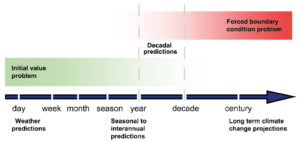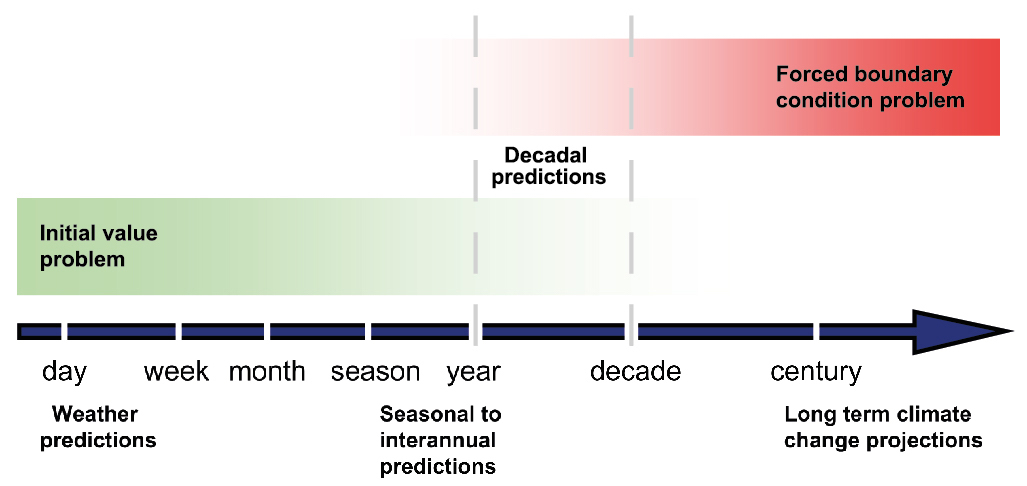
Kirtman, et al 2013: Near-term Climate Change: Projections and Predictability. In: Climate Change 2013: The Physical Science Basis. Contribution of Working Group I to the Fifth Assessment Report of the Intergovernmental Panel on Climate Change [Stocker, T.F., D. Qin, G.-K. Plattner, M. Tignor, S.K. Allen, J. Boschung, A. Nauels, Y. Xia, V. Bex and P.M. Midgley (eds.)]. Cambridge University Press, Cambridge, United Kingdom and New York, NY, USA.
Predictions and projections are generated using different modelling systems, reflecting the different factors involved, which makes it difficult combine the relevant information for a few years out all the way through to a few decades. This is why EUCP is pioneering approaches that will allow users to use more seamlessly the information from initialised climate predictions and climate projections to span these different timescales.




 Funded by the European Union under Horizon 2020.
Funded by the European Union under Horizon 2020.